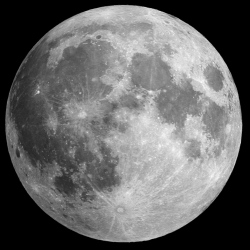
Researchers have found evidence that within the past 10 million years, our planet was in fact exposed to multiple nearby supernovae. Although these were too far away to cause destruction, the blasts would have been bright enough to see during the day, and could have sparked Earth’s recent ice ages.
Scientists have long wondered whether a blast of photons and particles from a nearby supernova may have damaged the atmosphere enough to alter Earth’s climate and so change the course of evolution or even cause a major extinction event. In principle, a stellar explosion could bombard Earth at any time.
However, the chances of that happening at any moment are tiny. Among the 100 billion stars in the Milky Way, just a couple explode into supernovae per century. An explosion close enough to have lethal effects is expected to happen 1.5 times every billion years.
Still, scientists already had good evidence for nearby supernovae. Those that have occurred since Earth formed could have left a mark on the planet in the form of particular radioactive isotopes, unstable versions of the normal elements around us. In the 1990s, modeling suggested that a supernova as far as 300 light-years away could send such isotopes to Earth if they were carried on dust grains flung out by the explosion. There are thousands of stars within that distance and yet only one supernova would be expected among them every million years.
Researchers then scoured the globe for thin layers of radioactive isotopes in rock strata and in 1999 struck figurative gold: Samples from beneath the ocean revealed some hard metallic layers, known as ferromanganese crusts that form slowly over millions of years, containing iron-60, an isotope with a half-life of 2.6 million years, so short that the material must be much younger than Earth.
The iron-60 was in a stratum laid down 2.2 million years ago. Similar layers of iron-60 have since been found elsewhere in the oceans. Astronomers have also been scouring the skies for groups of stars that could have created the blasts, with suspicion falling on two: the Scorpius-Centaurus (Sco-Cen) association, a group of more than 400 stars that would have been about 400 light-years away when the supernova occurred; and the Tucana-Horologium (Tuc-Hor) moving group which was 200 light-years away at the time.
However, the few iron-60 samples provide little information about the location of the offending supernova. “Terrestrial deposits are not very useful” for discerning direction, Ellis says. But they can reveal the rate at which atoms arrived, from which researchers can estimate the distance to the supernova. Current samples “very tentatively favor” the Tuc-Hor group, Ellis says.
Today, however, Anton Wallner, a nuclear physicist at the Australian National University (ANU) in Canberra and colleagues report a new, much more detailed examination of iron-60 deposition around the globe and argue that Earth was exposed to a burst of multiple supernovae. Analyzing 120 ocean-floor samples from the Atlantic, Pacific, and Indian oceans, the team reports that iron-60 is detectable everywhere and that it doesn’t seem to represent a single event, as the effected strata stretch from 1.7 million to 3.2 million years ago, as the researchers report today in Nature. “It suggests there were a series of supernovae, one after another,” Wallner said in a press release.
Ellis tells Science that the results are “very exciting,” but that researchers “have to be a little bit careful” because the time spread of deposits could have been caused by some sort of delay as a supernova’s dust grains crossed interstellar space. The ANU-led team also found iron-60 in deeper layers, signifying another event 8 million years ago.
“We may never be able to identify [the individual stars]," comments Neil Gehrels "but we can see the regions of intense star formation” where they lived and died.
So did these explosions have an impact on Earth and evolution? “It’s an interesting coincidence that they correspond with when the Earth cooled and moved from the Pliocene into the Pleistocene period,” Wallner said in a press release.
The Pleistocene is an epoch that covered most of the past 2.5 million years and saw cooling of the atmosphere and repeated ice ages. Some have suggested that particles from supernovae could have increased cloud cover, cooling the Earth’s surface.
To find out whether closer supernovae might have caused greater devastation further in the past, such as a mass extinction, will require a different radioactive isotope with a longer half-life. One candidate is plutonium-244, which has a half-life of 81 million years, but researchers haven’t found any yet.
Researchers also have hopes that deposits on the moon and other solar system bodies could point the way to past supernovae. With no atmosphere or oceans on the moon, dust grains from supernovae may still lay where they landed, so could even give some hints of the direction the grains came from.
In a paper due to be published next week in Physical Review Letters, a team reports an analysis of nine core samples brought back by the crews of Apollo 12, 15, and 16. The team found clear evidence of iron-60 deposition from the same supernovae sources as the samples on Earth and got a good measure of the rate of arrival.
All of the Apollo samples come from sites close to the equator on the near side of the moon. To detect variations in iron-60 density, and so deduce direction, would require a wider distribution of samples, so will have to wait for future lunar expeditions. Ellis says that if he was involved in the planning: “I would urge sample returns from sites well away from the lunar equator.”
